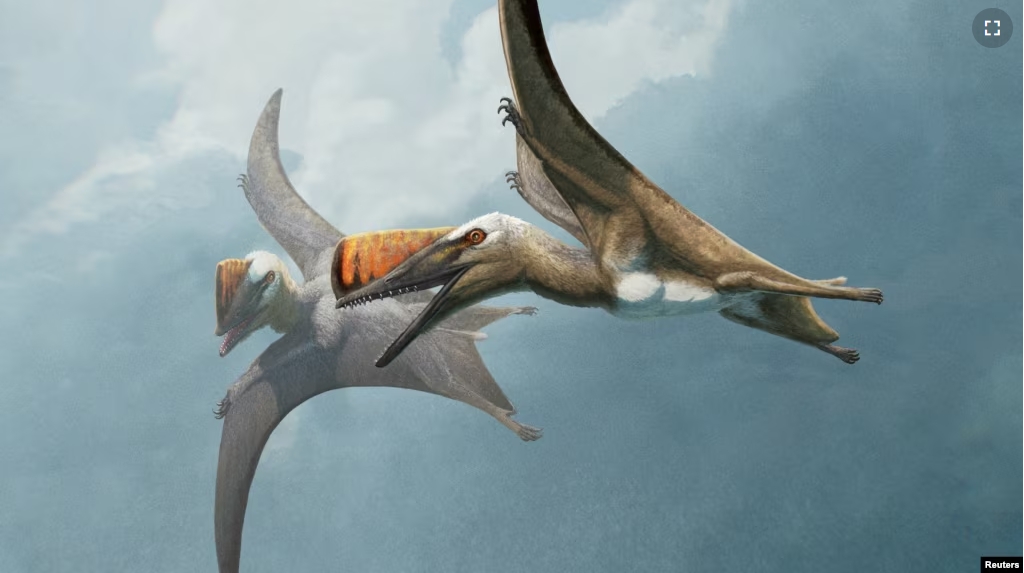Scientists say a fossil found in Germany is providing new details about flying reptiles that lived on Earth about 147 million years ago.
The fossil was discovered in 2015 in the southeastern German state of Bavaria. It contains the remains of a newly identified species called Skiphosoura bavarica.
Skiphosoura is considered a pterosaur, an ancient flying reptile. It lived toward the end of the Jurassic Period. Researchers say the creature played an important part in the development of ecosystems during the age of the dinosaurs.
The reptile had a wing reach of about 2 meters for traveling and a set of sharp teeth to help capture and eat other animals. Skiphosoura would have been one of the largest fliers in its ecosystem. Researchers say the discovered fossil was in good shape, with nearly every bone remaining in the skeleton. This has permitted the team to learn new details about this pterosaur.
One of the leaders of the fossil examinations is David Hone of Queen Mary University of London. He told Reuters news agency he thinks the fossil find was “of huge importance.”
Hone was the lead writer of a study describing the team’s work in the publication Current Biology. He added that Skiphosoura has provided new information about the evolution of pterosaurs. “It also brings other pterosaur finds we had already made into focus,” Hone said.
He added that the discovery also helps better explain “where they go in the family tree of pterosaurs” and permits scientists to show this development from early to later forms.
“The teeth are quite long and sharp. They are for puncturing and holding,” Hone said. He noted these were likely used to catch smaller animals such as lizards, small mammals, insects and possibly fish.
Pterosaurs are considered ancestors of the dinosaurs. They were the first of three groups of vertebrates – animals with a backbone – to enjoy powered flight. Pterosaurs disappeared about 66 million years ago in the mass extinction that also took out most of the dinosaurs after an asteroid struck Earth.
Scientists divide pterosaurs into two major groups – the early non-pterodactyloids and the later pterodactyloids. The early group’s members had a short head, short neck, long tail and a long fifth toe on the foot. The later ones had a large head, long neck, short tail, long wrist and short fifth toe.
The team says the discovery of Skiphosoura – along with another species that lived 170 million years ago in Scotland – have helped shape important events in pterosaur development.
I’m Bryan Lynn.
Reuters reported this story. Bryan Lynn adapted the report for VOA Learning English.
_________________________________________
Words in This Story
fossil – n. something (such as a leaf, skeleton, or footprint) from a plant or animal that lived in ancient times and that you can see in old rocks
species – n. a group of animals or plants that are similar and can produce young animals or plants
ecosystem – n. all the living things in a particular area, as well as the ways the things affect each other and the environment
focus – n. special attention you give something
puncture – v. to make a hole in something
extinct – adj. not existing anymore
asteroid – n. a rocky object that goes around the sun like a planet
